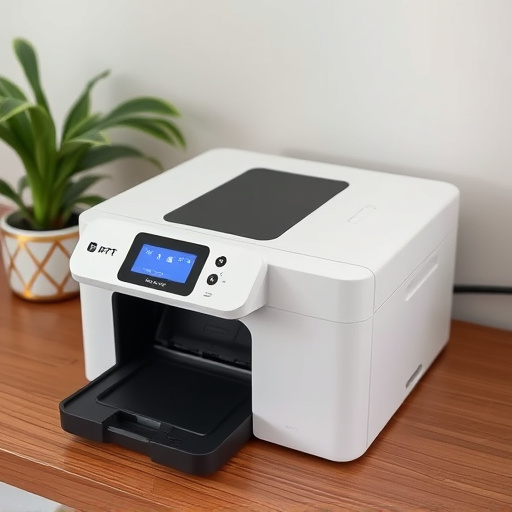Patient Portals, powered by technology advancements, transform healthcare access and delivery through secure online platforms. These portals enable patients to manage health info, communicate with providers, and access services remotely. Key features include user-friendly interfaces, robust security, and seamless integration with existing systems. Custom medical website design is crucial for creating tailored portals that enhance patient convenience, streamline interactions, and facilitate instant record sharing, ultimately improving care and outcomes. Integrating these portals into medical website design improves patient engagement, accessibility, and local search visibility, boosting traffic and retention. Best practices include intuitive navigation, clean layout, mobile optimization, high-quality visuals, and SEO strategies for enhanced online discoverability.
In today’s digital age, medical practices must embrace innovative solutions to enhance patient engagement. Integrating patient portals into medical website design offers a powerful way to streamline communication and improve healthcare access. This article explores the transformative potential of patient portals, highlighting their benefits and essential features. We guide you through seamless integration strategies and provide best practices for creating exceptional, user-friendly medical websites that cater to modern patients’ needs. Discover how optimal medical website design can revolutionize patient experiences.
- Understanding Patient Portals: Benefits and Essential Features
- Integrating Patient Portals Seamlessly into Medical Website Design
- Best Practices for Creating Engaging and User-Friendly Medical Websites with Portals
Understanding Patient Portals: Benefits and Essential Features

Patient Portals are transforming how healthcare is delivered and accessed, making medical website design an integral part of modern patient care. These online platforms empower patients by providing a secure space to manage their health information, communicate with providers, and access services remotely. Benefits include enhanced convenience for patients, improved efficiency in doctor-patient interactions, and the ability to share updates and records instantly.
Essential features of effective Patient Portals include user-friendly interfaces designed with patient needs in mind, robust security protocols to safeguard sensitive medical data, and integration with existing healthcare systems. Custom website design plays a crucial role in creating tailored portals that reflect a practice’s brand and offer personalized experiences. For local businesses focusing on online marketing, optimizing web design near me can attract patients within their reach, demonstrating how strategic digital solutions contribute to better patient engagement and outcomes.
Integrating Patient Portals Seamlessly into Medical Website Design

Integrating patient portals into medical website design is a strategic move that enhances patient engagement and improves overall healthcare accessibility. These digital platforms serve as a bridge between patients and healthcare providers, offering convenient access to medical records, appointment scheduling, and secure communication channels. When incorporated seamlessly into a medical website, patient portals become an integral part of the user experience, fostering trust and satisfaction among patients.
A well-designed portal can boost local search visibility by providing a centralized resource for patients seeking healthcare services. Optimizing these platforms for Google Business Profile enhances online discoverability, ensuring that prospective patients easily find and connect with medical practices. Furthermore, integrating portals effectively increases website traffic as patients actively engage with the site to manage their health, thereby improving patient retention and fostering long-term relationships between healthcare providers and their communities.
Best Practices for Creating Engaging and User-Friendly Medical Websites with Portals

Creating engaging and user-friendly medical websites with integrated patient portals is a critical aspect of modern healthcare. To ensure effectiveness, several best practices should be implemented. Firstly, focus on intuitive navigation to enable patients to access their records, schedule appointments, and find relevant health information effortlessly. A clean layout, consistent design elements, and clear call-to-actions are essential for enhancing user experience. Additionally, optimizing the website for mobile devices is crucial as many patients prefer accessing healthcare services through smartphones or tablets.
Visual appeal and accessibility should also be prioritized in medical website design. Utilize high-quality images and graphics that convey a sense of professionalism and trustworthiness while ensuring they load quickly to avoid frustrating users. Incorporate features like search functionality, live chat support, and personalized content to cater to individual patient needs. Engaging visuals and interactive elements can help keep patients invested in their healthcare journey. For those seeking professional assistance with website design Hollywood FL or web design near me, considering a qualified SEO consultant nearby can significantly boost online visibility, making it easier for potential patients to connect.
Medical websites that incorporate patient portals enhance user experience, foster engagement, and streamline healthcare access. By integrating these features seamlessly into the design, healthcare providers can offer patients a centralized hub for managing their health. Adhering to best practices ensures accessibility, usability, and security, ultimately improving patient satisfaction and outcomes in today’s digital age. Medical website design that prioritizes patient portals is not just a trend but a necessary step towards a more connected and efficient healthcare system.














